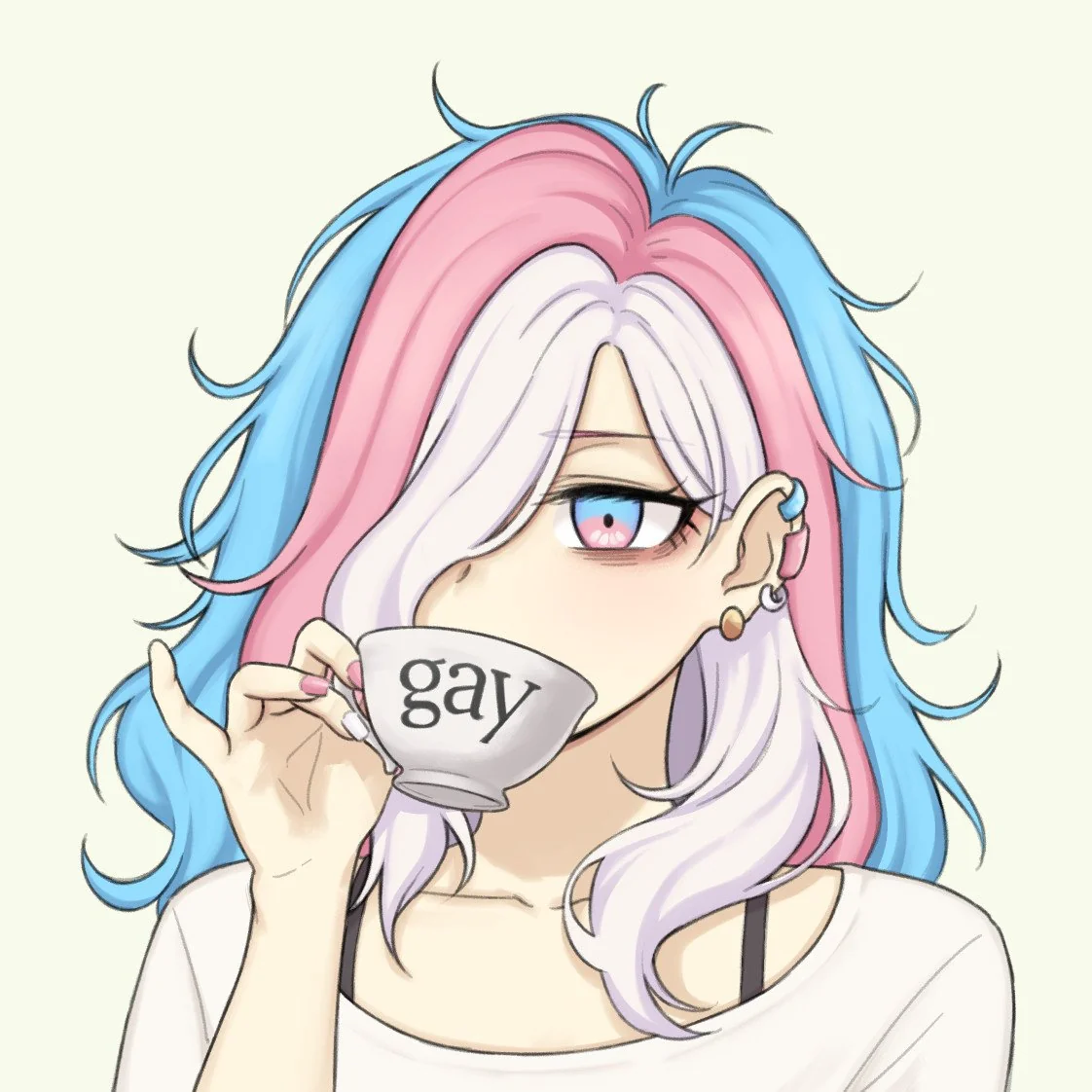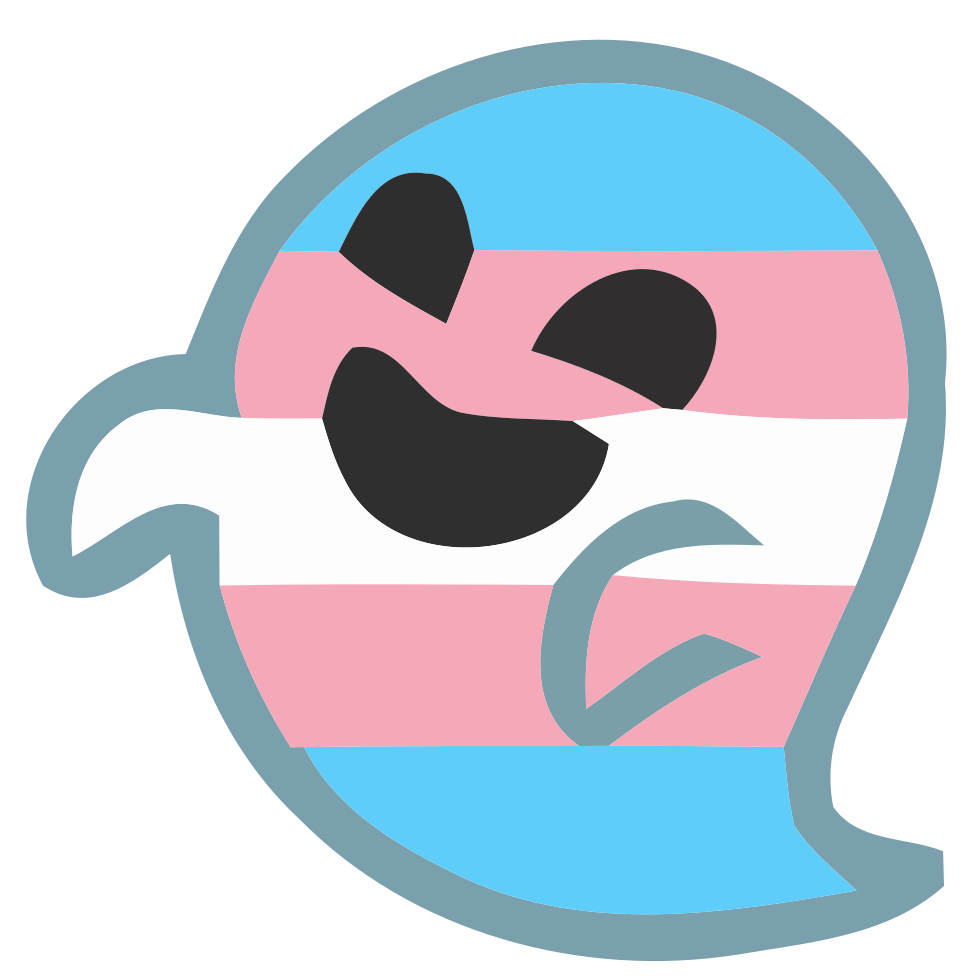Hello everyone! Hestia here with a new Megathread! Years ago, before I transitioned and when I was still in college I took an anthropology class. My favorite part of the class was when we were covering different gender customs across the globe and got to make a report on one of them. I can’t remember exactly which one I chose for that project, but what I do remember is a map with different pins scattered on it with various forms of gender-queerness. I decided to track it down and share it with you folks!
Edit: you have to open this in a browser, if you’re on a phone it will automatically try to open it in Google maps and won’t bring up the info.
This map provides a brief summary of these genders, but does not go in depth. If you find any you’re interested in, feel free to do some further research and share your findings here. I’ll pin a comment to this post you can attach them. I’m going to share a couple that I found interesting and decided to look further into myself, both of them are non-binary and native american in origin.
The first one I want to talk about is the Winkte, which is a third gender role that was particulatly notable in the Lakota tribe The Winkte are seen as half-men, half-women, and considered sacred. They are typically AMAB and historically have served unique roles in matters of romance and matchmaking and often served as intermediaries for prospecting couples and their families. They also participated in war parties, functioning primarily as witnesses to battle and as doctors to care for the injured. They were also seen as seers, able to forsee paths to victory.
https://www.sdpb.org/blogs/arts-and-culture/the-winkte-and-the-hundred-in-hand/
This next one I’m going to talk about seems mostly local to the Zuni people called the “Lhamana” and I find the Zuni culture to be particularly fascinating, even just doing a cursory glance at it.
Gender roles were well defined in Zuni culture, but the Zuni also valued the concept of a “middle” as it represented stability. This originates from their creation myth, which I won’t go in detail here because I don’t feel qualified to summarize it, but it’s in the link down below.
The Zuni culture is pretty neat and they don’t refer to gender when talking about children. They believed that gender wasn’t an inborn trait but something you acquired as you approached puberty. I wish this was the western approach, but alas.
As children approach puberty they begin to differentiate through different hair styles or clothing choices. AFAB Lhamana would grind corn and make a bowl of stew when they get their first period. There’s probably some cultural significance to this, but I’m not going to do a deep dive on it right now. AMAB Lhamana would start to wear dresses once they hit puberty and start performing women’s work. Both AMAB and AFAB Lhamana were allowed to switch between male and female gender roles as they pleased.
https://owlcation.com/social-sciences/The-Middle-Gender-in-Zuni-Religion
That’s all for now! To wrap thing up I would like to invite yall to our public matrix server! https://matrix.to/#/#tracha:chapo.chat
As a reminder, be sure to properly give content warnings and put sensitive subjects behind proper spoiler tags. It’s for the mental health of not just your comrades, but yourself as well.
Here is a screenshot of where to find the spoiler button.



This is silly and I’m really dumb so take all this with a grain of salt but I saw a few posts in here yesterday (https://hexbear.net/comment/5675116) about a concept of gender as a point in some kind of geometric space, then I spent a while trying to write a formal definition of “gender” in Metamath :3 I will ping the posters too perhaps
@[email protected] @[email protected]
long dumb math talking
It seemed simple enough at first, I figured I would start from Tarski’s axioms of geometry (I like the first-order theories as a dumb person :3), weaken them or drop them appropriately to get appropriate abstractness of “gender” but I kept thinking about it and more and more it seemed less and less like geometry. Like what does it mean for a gender “point” to be between other gender points? Are genders congruent??
So I started thinking, maybe gender would be best represented as some kind of topological space. I had never even heard of topology before so I spent like 5 hrs reading about it, tearing apart the Metamath definitions, and I still only very vaguely kind of get it (my vibe is that the definitions of topology I read about as collections of open subsets of sets or the neighborhood stuff don’t actually describe very well what people actually use topology for lol). Now I will go up, starting from the bottom, the traditional topological space hierarchy and explain why I can’t seem to make it work for gender:
(my vibe is that the definitions of topology I read about as collections of open subsets of sets or the neighborhood stuff don’t actually describe very well what people actually use topology for lol). Now I will go up, starting from the bottom, the traditional topological space hierarchy and explain why I can’t seem to make it work for gender:
Inner product spaces I quickly skipped over cuz they seemed too restricting, not general enough
A normed vector space initially seemed kinda close to the original informal definition of gender given by Lilypad:
“I have thought about gender as an N-dimensional space, where
N≥0. For every persons experience of gender, i think of it as the area where for∀n∈N,n>0, with completely agender being that for∀n∈N, n=0.”Is a very pretty way to think of it imo. I moved on from this for similar reasons to metric spaces, which I will describe
What about metric spaces? Metric spaces are even closer to Lilypad’s informal definition and are the traditional formalism for Euclidean spaces (a metric space with 3 dimensions r3). I couldn’t make Tarki’s geometry work conceptually but maybe a metric space would work? Is just that I ran into the same problem, which is that dimensions of a space imply 2 binary directions. Like what mean is (sorry am not so fluent in math language yet), a single-dimensioned vector is either going in a direction x or going in the complementary opposite direction of x (-x or signed x or idk). In Euclidean space it is like a “positive” x or y or z direction vs its complementary “negative” x or y or z direction. In other words, 2 vectors that are equal except for 1 component are on the same line. The problem is, I can’t think of any gender thing like this except for the masculine-feminine binary and I don’t want to concede that gender is really just a bunch of different gender binaries deep down. The other problem, which I think is also implicit in the informal definition, is that metric spaces by definition have a concept of “distance”, which is a function that takes 2 points and “returns” a real-valued distance > 0 for 2 distinct points, and I can’t think of a way to formalize the metaphorical distance between genders without breaking all of the axioms that make a metric space a metric space (Like I didn’t mention distances have to obey the triangle inequality lol) and without a non-real-valued distance function
So then… I considered… topological spaces which are so general that it’s quite hard to get a grasp on and everyone is just making their own special useful topological spaces under a bunch of different names. To be more specific and vague at the same time, one definition is: a topology T of a set X is a collection of “open” subsets of that set that satisfies the following conditions: the empty set and X are in T, any arbitrary union (like adding the elements of 2 sets together into one big set) of elements of T is in T, the intersection (the set of only common elements between 2 sets) of any finite number of of elements of T is in T. This seems like the {good, bad, {}, {good, bad}} thing about topologies… they’re so fucking general that you can use them for so many things, yet so vague you’re gonna be making your types of topologies to do anything cool with them. Like there are 2 kinds of topologies in general which are discrete topologies where you meet those requirements uhhh “enthusiastically” and do every possible union and as many intersections before it becomes infinite (idk where there that is
which are so general that it’s quite hard to get a grasp on and everyone is just making their own special useful topological spaces under a bunch of different names. To be more specific and vague at the same time, one definition is: a topology T of a set X is a collection of “open” subsets of that set that satisfies the following conditions: the empty set and X are in T, any arbitrary union (like adding the elements of 2 sets together into one big set) of elements of T is in T, the intersection (the set of only common elements between 2 sets) of any finite number of of elements of T is in T. This seems like the {good, bad, {}, {good, bad}} thing about topologies… they’re so fucking general that you can use them for so many things, yet so vague you’re gonna be making your types of topologies to do anything cool with them. Like there are 2 kinds of topologies in general which are discrete topologies where you meet those requirements uhhh “enthusiastically” and do every possible union and as many intersections before it becomes infinite (idk where there that is  ) or indiscrete topologies where “you” did the minimum possible to meet those requirements and your topology T of X is literally just { {}, X } lol. And all the interesting topologies are somewhere in-between those kinds of topologies. Oh, and that’s just one definition, also the most general (most useless, I just want my gender topology smh). There is an equivalent definition, which is way more interesting for our purposes, based on a concept of “neighborhoods” which brings a concept of “closeness” into it (as in you can make topologies of sets based on how “close” the elements are to each other or something lol). I am getting tired of writing though, so go look that up for yourself if you want lol
) or indiscrete topologies where “you” did the minimum possible to meet those requirements and your topology T of X is literally just { {}, X } lol. And all the interesting topologies are somewhere in-between those kinds of topologies. Oh, and that’s just one definition, also the most general (most useless, I just want my gender topology smh). There is an equivalent definition, which is way more interesting for our purposes, based on a concept of “neighborhoods” which brings a concept of “closeness” into it (as in you can make topologies of sets based on how “close” the elements are to each other or something lol). I am getting tired of writing though, so go look that up for yourself if you want lol
A topological space is something like an ordered pair of a “base” set X and its topologies. So I guess what we are interested in for our “gender” topological space is the set of all “genders” and its topologies… maybe. The basic idea here which I am clutching to and on the verge of dropping it into a vast sea of abstractness is uhhhh oh, yeah, I think I just lost it
Are there any math nerds who can help?
I spill my set
Yeah, like you said, you need a metric as well to induce a topology. Metrics only need to meet 3 definitions, that between any two elements/points in the space must be 0 or positive. That the distance between a point and another must be the same as the other point and the first one (no changing distance between view points). And the hard one is that it must obey the triangle inequality, the other two are always the easier ones to prove a proposed metric meets the definition.
Also the zero metric is a valid metric, which is just for x=/=y d(x,y)=0, if x=y d(x,y)=0. It is left as an exercise to the reader to prove it meets the definition of a metric. Which when it comes to the space of all possible genders, yeah the zero metric induces a totally valid and boring topology lol
Okay, fuck it, set theory? More like sweat theory!!! I need to get category-pilled or something
The correct response to someone asserting Russell’s paradox is to shove that nerd in a locker
No wonder the set theorists didn’t do that, all turbo-nerds themselves smh, who else could come up with topology
“WOKE, LIBERAL (NAIVE) SET THEORIST DESTROYED by LOGIC and REDUCTIO AD ABSURDUM”
Mods pls ban this for putting math in my trans mega.
Actually all of the spaces you have mentioned have “trivial” examples that fit the definition of what it means to be that type of space, but are very boring. For example, the trivial vector space is a vector space where the only thing that exists is the zero vector. Though it is significantly more obvious that such a trivial example exists for topologies, just by looking at the definition.
The definition of a topology is the way that it is so that there is a notion of closeness at the local level, but not really at the macro level. I’m sure you’ve heard that topologists can’t tell the difference between a coffee cup and a donut. This is because a continuous deformation exists that can transform the coffee cup into the donut. So we don’t really care about distances at the larger level (distances get all sorts of fucked up through this transformation). However, it is a continuous transformation, which intuitively just means that if two points were “close” before the transformation, they are also “close” after the transformation. So we still care about distance at that level.
I would like to throw in another possibility that I haven’t seen discussed though: vector spaces of functions. This I think solves some of the problems you run into with n-dimensional vector spaces, since you can choose whatever domain and range you want for your functions. So a specific gender could be an element of this function space, of the form f:X -> F, where X is some set and F is some field. This seems to have the generality you’re looking for without the fluidity of topologies. Note that when X is of the form {1, 2, …, n} and F is the set of reals, we get an n-dimensional vector space.
Removed by mod